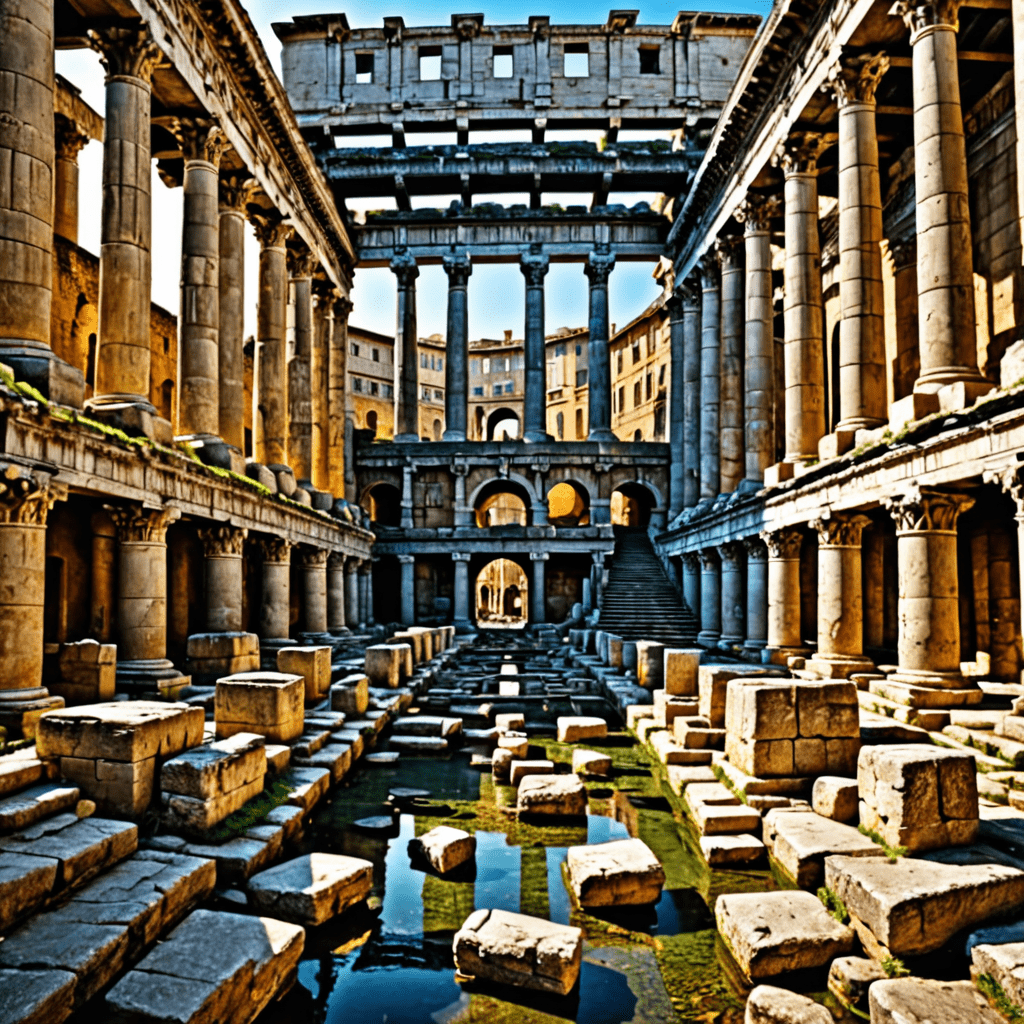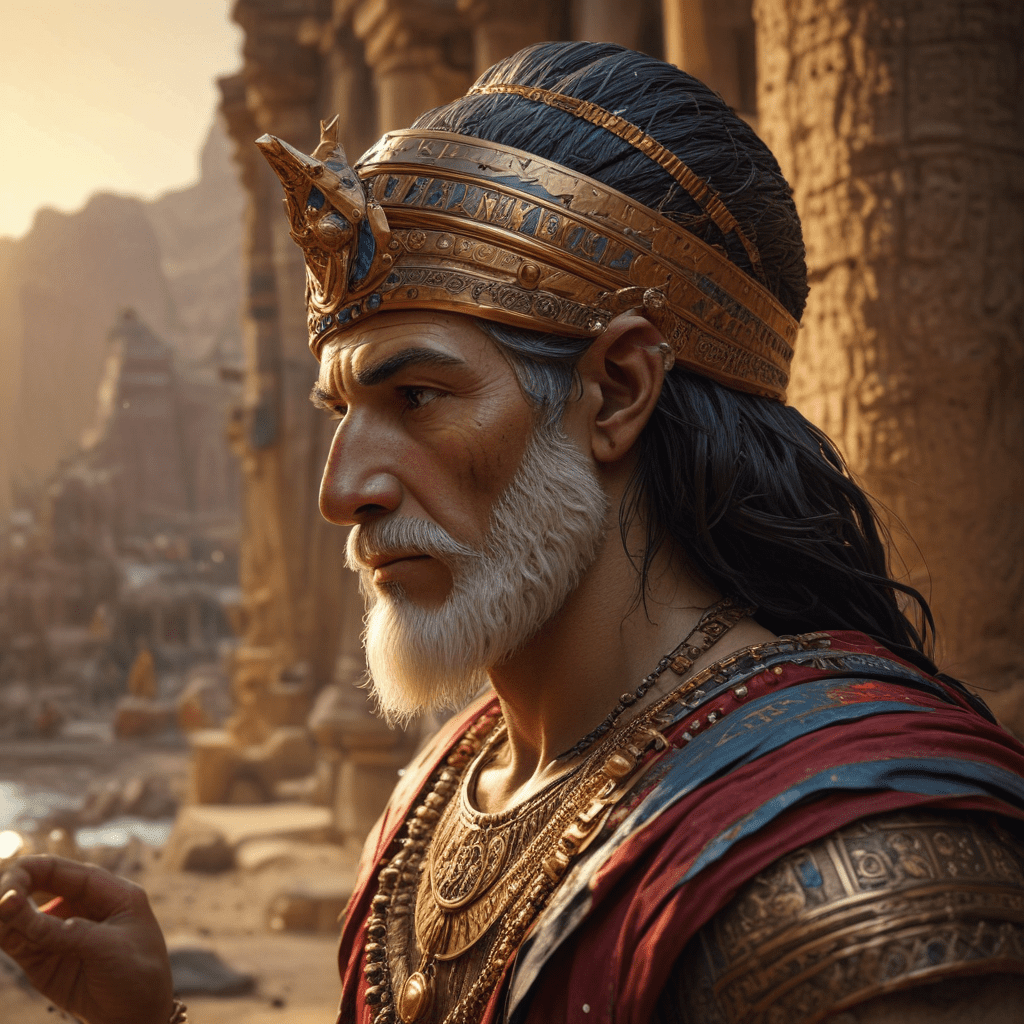The Influence of Roman Mythology on Roman Infrastructure
Roman mythology, deeply rooted in the beliefs and stories of the ancient Roman people, played a significant role in shaping not only their cultural practices but also their infrastructure development. Let’s delve into how Roman mythology influenced the creation and construction of important Roman infrastructure.
1. The Role of Roman Gods and Goddesses in Infrastructure
Roman mythology was based on a pantheon of gods and goddesses, each associated with various aspects of life, nature, and existence. In ancient Rome, it was common for important infrastructure projects to be dedicated to specific deities. For example, temples and aqueducts were often constructed in honor of gods like Jupiter, Neptune, and Minerva. The belief was that by honoring these deities through infrastructure, protection and prosperity would be bestowed upon the city and its inhabitants.
2. Influence on Architectural Design and Features
The stories and mythological tales of the Roman gods and goddesses also inspired the architectural design of Roman infrastructure. For instance, the Pantheon in Rome, dedicated to all the gods, reflects the grandeur and magnificence associated with Roman mythological beliefs. Additionally, the intricate detailing and sculptural elements found in structures like the Arch of Constantine and the Colosseum often depicted scenes from mythology, showcasing the intertwining of belief systems with physical structures.
3. Engineering Marvels Inspired by Mythological Ideals
Roman mythology, with its emphasis on power, order, and strength, greatly influenced the engineering feats of the Roman Empire. The construction of bridges, roads, and aqueducts was not merely practical but also symbolic of the Roman belief in divine protection and influence. For example, the Pont du Gard aqueduct in France, part of the Roman Nimes aqueduct, showcases the impressive architectural skills of the Romans in channeling water across vast distances, a task that was often attributed to water deities in mythological stories.
4. Legacy in Modern Infrastructure and Architecture
The influence of Roman mythology on infrastructure extends far beyond ancient times. Many of the architectural principles and engineering techniques developed by the Romans continue to inspire modern infrastructure projects. The grandeur and innovation seen in structures like the Roman baths or amphitheaters have left a lasting legacy on the world of architecture, shaping how we view and construct buildings and infrastructure today.
In conclusion, the influence of Roman mythology on Roman infrastructure was profound and multifaceted, impacting not just the physical aspects of construction but also the cultural and symbolic meanings attached to these structures. By honoring their gods and goddesses through architecture and engineering, the ancient Romans created a lasting legacy that continues to captivate and inspire us to this day.
FAQ: The Influence of Roman Mythology on Roman Infrastructure
What role did Roman mythology play in shaping Roman infrastructure?
Roman mythology exerted a significant influence on Roman infrastructure, with many architectural projects inspired by mythical stories and beliefs. Temples, amphitheaters, aqueducts, and other structures were often dedicated to gods and goddesses, reflecting religious practices and cultural values.
Can you provide examples of Roman infrastructure influenced by mythology?
Certainly! The Pantheon in Rome, dedicated to all the gods, reflects the Roman belief in a pantheon of deities. The Colosseum, where gladiatorial games took place, was connected to the god Mars, the deity of war. Aqueducts, such as the Aqua Claudia, were named after water-related deities like Aqua (the Roman water goddess).
How did Roman mythology impact the design and layout of cities?
Roman cities were often planned with consideration for mythological beliefs. For instance, the streets of Pompeii were aligned with the position of the sun on particular festival days related to Apollo. The layout of cities like Rome itself incorporated elements related to the myth of Romulus and Remus, the legendary founders of the city.
Did Roman mythology influence the construction of bridges and roads as well?
Yes, Roman mythology also influenced the construction of bridges and roads. For example, bridges were sometimes



